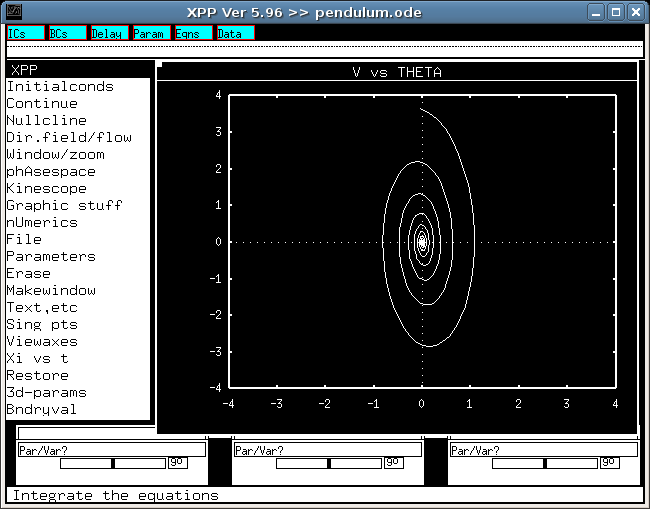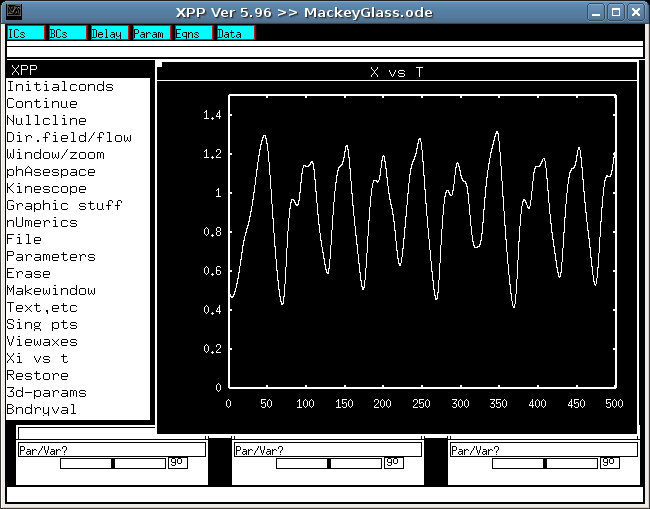

An XPP ODE file is created by the command
The name of the file created by this command is [name].ode, where [name] is the name of the vector field given in the vector field file.
The following table shows how the vector field file format is translated to the XPP ODE format.
| VFGEN Element | XPP ODE File | Notes |
| Constant | number=value | |
| Parameter | par=value | Warning: VFGEN does not (yet) check if the exclamation point (!) should be used to indicate that the parameter is a derived parameter. |
| Expression | name=formula | name is the VFGEN Name of the Expression |
| StateVariable | name'=formula init name=value name(0)=formula |
name is the VFGEN Name of the StateVariable.
The formula for name'=formula is taken from the StateVariable's Formula attribute. The value for the initial value in init name=value is taken from the StateVariable's DefaultInitialCondition attribute. The formula in name(0)=formula is taken from the StateVariable's DefaultHistory attribute. |
| Function | aux=formula |
| extra |
The option extra=text allows the user to customize the ODE file with additional
lines. The characters in text will be written to the end of the ODE file.
Any semi-colons in text are converted to newlines. For example
extra="@ total=100;@ maxstor=10000" will add the lines
@ total=100
to the ODE file. (A final semi-colon in text is optional.)
@ maxstor=10000 Warning: Currently, text must not contain any commas! (This should be fixed in a future version of VFGEN.) |
The XPP command (like all the commands) is a work-in-progress. Here are some known problems that may be fixed in future versions of VFGEN:
Here is a sample vector field file: pendulum.vf.
The file created by

The Mackey-Glass equation is the differential delay equation
A vector field file for this equation is MackeyGlass.vf.
We create an ODE file for XPP with the command
We run XPP with the command
Then run the simulation by selecting Initialconds followed by (O)ld. (Press I then O in the main menu.)
The following screenshot shows the result.
